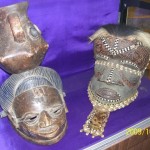Ninety Six, South Carolina has a rich African American Heritage. In 1670, people of African ancestry were among the first inhabitants of the new Carolina colony. They arrived as slaves of the English settlers from Barbados. Within a decade, the white settlers in South Carolina had created a plantation system to grow rice which was dependent on slave labor and modeled after the plantations of the Caribbean.
By the 1740s, English, French, German, Scotch-Irish, and African-Americans moved into the lower county between Saluda and Savannah Rivers. Most Africans arrived in bondage to work as farm laborers. As an English traveler once observed and wrote in 1763: “Slaves do all the labor or hand work in the country, and are a considerable Part of the Riches of the Providence”. They help make South Carolina the Wealthiest British colony in North America.
African-Americans played a significant role in the War for Independence, fighting for both King and the patriot cause. They were among the loyalist militia in the first battle of Ninety Six (November 19-21, 1775); they marched with the patriots to fight at Cowpens and King Mountain: labor battalions of loyalist slaves largely built the British fortifications at Ninety Six (1781): and some fled with Troy masters to Canada and other British colonies when the conflict ended, where most gained their freedom.

African-American Art Collections are on display in the Ninety Six Library which offers a fascinating community site that reflects the history, culture, experiences, and accomplishments of African Americans in South Carolina. Today the Gullah communities of the low country are strong reminders of the American-American influences within South Carolina.